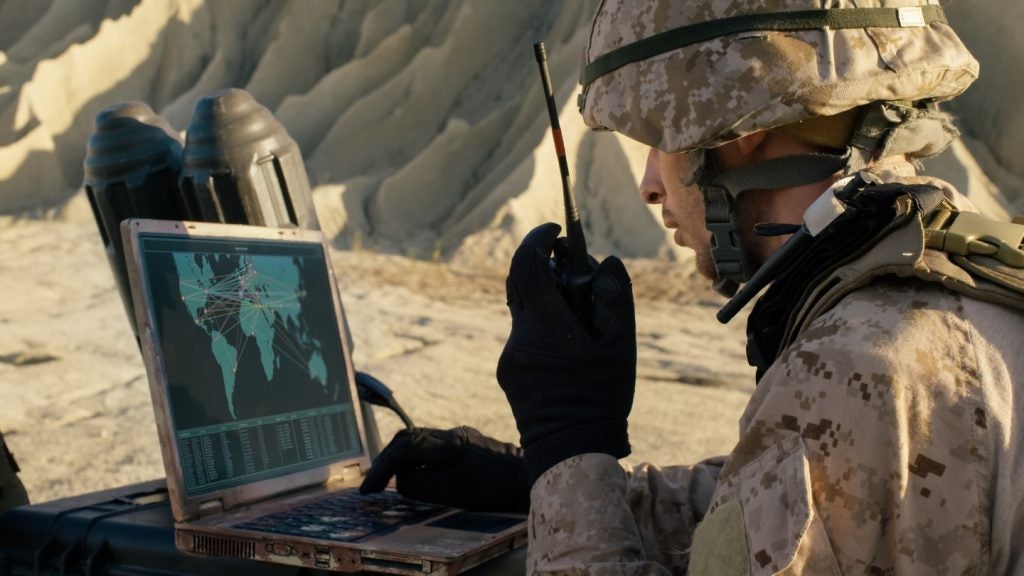
The last place a solider wants to be injured is on the battlefield, where it can be difficult to receive adequate treatment, especially for pain.
And in most battlefields, getting pain-relieving medicine to the wounded can be tricky. As well as strong, fast-acting drugs, a medically skilled person is often necessary to help administer them so finding a drug, and a system to deliver it quickly, has become critical.
Now, a $1.3m pilot grant funded by the US Defense Advanced Research Projects Agency (DARPA) at the University of Michigan in Ann Arbor is looking at a safe method to administer safely nanoparticle-based medications on the field before the wounded are brought to a critical care facility.
Researcher James R Baker Jr, MD, a former military physician and now professor of internal medicine and director of the Michigan Nanotechnology Institute for Medicine and Biological Sciences (M-NiMBS) and several multi-disciplinary colleagues plan to test whether nanoparticle-sized drugs can solve the pressing problem in battle zones like Iraq: how to administer sustained, safe doses of the most effective painkillers to injured soldiers, long before they can reach expert medical help.
In a prepared statement, Baker said: “Our ultimate goal is to develop tiny drug-bearing particles that a fellow soldier, or perhaps the injured soldier himself, could inject with a pen-like device, even in the heat of combat. That would solve one of the challenges. Morphine, an effective painkiller that the military commonly uses for the acute pain of battle injuries, currently needs to be injected by skilled medical personnel and has to be monitored carefully to control its troublesome tendency to suppress normal breathing.”
See Also:
He added: “This proposal provides an approach to achieve sustained, safe pain control on the battlefield. It uses different medicines, coupled to polymers, to release drugs and antidotes, providing adequate pain relief while avoiding complications. If successful, it could markedly improve the treatment of soldiers in the field.”
How well do you really know your competitors?
Access the most comprehensive Company Profiles on the market, powered by GlobalData. Save hours of research. Gain competitive edge.

Thank you!
Your download email will arrive shortly
Not ready to buy yet? Download a free sample
We are confident about the unique quality of our Company Profiles. However, we want you to make the most beneficial decision for your business, so we offer a free sample that you can download by submitting the below form
By GlobalDataWHAT NANOPARTICLES CAN DO FOR PHARMACEUTICALS
According to a newly released study titled ‘World Nanomaterials’, prepared by the Freedonia Group, Cleveland, Ohio, nanomaterials are in critical demand in drug-delivery systems for several specific needs. These include encapsulation to protect drugs during transport through the body and as functional drug carriers in targeted delivery systems.
This study goes on to report that benefits of nano-sized particles include increased bioavailability, improved diffusion and solubility, the ability to penetrate the blood-brain barrier, lower immune rejection rates, better digestibility, increased efficacy, timed release and the ability to target specific sites for treatment.
In addition to delivering drugs, nanomaterials are also being developed to extract drugs from the blood in order to treat drug overdoses.
PAIN MANAGEMENT ON THE BATTLEFIELD
Truth be told, drugs that relieve pain already are widely used in battlefield medicine. In the hands of trained professionals, powerful analgesics such as morphine can be safely titrated for therapeutic benefits while minimising adverse drug effects. General anaesthetics also are widely used, but they too require sophisticated expertise and equipment for safe use.
On battlefield, resources and equipment might be strained or unavailable, especially in situations where combatants and medics are limited by what they can carry.
Trained medics can administer drugs such as morphine, while in some cases non-medically trained combatants or the wounded themselves, must administer powerful drugs. Under these extreme conditions, careful titration of drug dosage to assure pain control is impractical, if not impossible, while the risk of unintentional over dosage might be significant.
CHANGES IN BATTLEFIELD PAIN MANAGEMENT
If the work of the Michigan researchers pans out, it could have a broad impact. In the war in Iraq alone more than 26,900 US soldiers have been wounded in action as of late July. It is known that battlefield pain, if not relieved adequately, can also lead to post-traumatic stress disorders.
The researchers will use the grant funding to design multipurpose nanoparticles and test how well they perform several tasks under simulated physiological conditions in the laboratory. Two include:
- Controlling the release of morphine over extended periods before a soldier can be evacuated to a military acute care facility
- Continuously monitoring the soldier’s breathing and, if needed, release a drug called Naloxone, used to counter morphine’s effects on breathing
The team, which includes synthetic, analytical and medicinal chemists, will expand on the use of dendrimer platforms, a technology previously developed at the University of Michigan. They will design ultra-small polymer particles called dendrimers capable of carrying morphine and Naloxone into the body and releasing them in controlled amounts. The plan: they hope to develop sensors that the dendrimers will also carry to monitor a soldier’s respiration and trigger Naloxone release, or halt it, as needed.
If the concept proves successful after the first year of in vitro studies, Baker and his team want to apply for continued DARPA funding to proceed with animal and eventually human studies. They will start with a proof-of-concept year in which they will demonstrate that they can release analgesic / narcotic drugs as well as antagonist drugs from the polymer platform under physiological conditions.
DEVELOPING A CONTROLLED-RELEASE SYSTEM
In order to address the unique requirements for analgesia under battlefield conditions, scientists from the Michigan Nanotechnology Institute for Medicine and Biological Sciences (M-NiMBS) will use poly-amidoamine (PAMAM) dendrimer-based multifunctional nanodevices to engineer a controlled release analgesic that will be safe to administer under battlefield conditions without close monitoring of the injured.
M-NiMBS will develop a controlled-release system of morphine / Naloxone with a built-in feedback system that controls the release of Naloxone, based upon the injured soldier’s condition. Naloxone is used to counter certain effects of morphine such as respiratory depression. The institute says it plans to develop a combination drug that can be delivered to the injured soldier on the battlefield, possibly by self-administration with an intramuscular auto-injector or by fellow war fighters or medics.
The combination drug is comprised of controlled-release of analgesic drugs such as morphine, coupled with the functionality of monitoring of markers of respiratory depression that, in turn, control the release of a narcotic antagonist, Naloxone. The Naloxone will therefore not be active until released by special linkers that release only in the presence of markers which indicate respiratory depression / hypoxia.
When the injured soldier’s respiratory depression condition is reversed, the release of the antagonist will stop.
Patent applications have been filed on related University of Michigan dendrimer inventions, which have been exclusively licensed to Avidimer Therapeutics, an Ann Arbor-based biotech company, in which Dr Baker has a financial interest.







